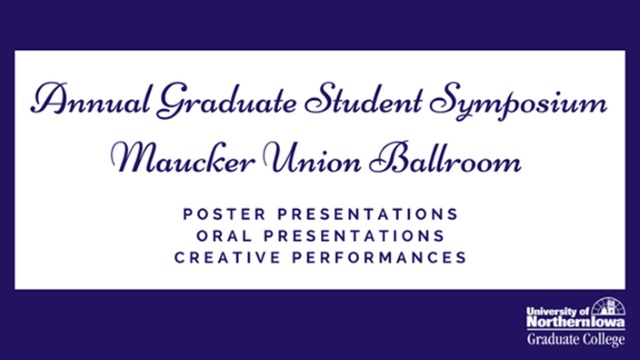
Complete Schedule
The Patterns of Preceding Utterances of Communication Partner on Independent Communication Acts of Students Utilizing AAC
Award Winner

Recipient of the 11th Annual Graduate Student Symposium Scholarship Award, Poster Presentations - Honorable Mention (2018)
To go to the Graduate Student Symposium event page, Click here
Presentation Type
Poster Presentation (Electronic Copy Not Available)
Keywords
People with disabilities--Means of communication; Communication--Social aspects;
Abstract
Purpose: The goal of this study was to discover if patterns exist for the adults’ preceding utterances of the students’ communication acts of: initiation - introducing a new topic and non-obligatory - spontaneous contribution to conversation (I-NO) from students utilizing augmentative and alternative communication (AAC).
Rationale: Individuals using AAC generally use more obligatory (socially required) communication acts. Finding ways to increase the range of communication acts would increase expressive communication skills. Identifying patterns in communication partners’ preceding utterances could have clinical implications for identifying and creating opportunities for more I-NO communication acts.
Method: Interactions of eight school aged children using AAC with their communication partners were evaluated through language samples. Language samples were taken from classroom activities during the Fall and Spring semesters and coded. The codes of the communication partners’ preceding utterances to the children’s I-NO communication acts were analyzed to determine if patterns were present.
Results: The children using AAC appeared to produce more I-NO communication acts when the communication partner’s preceding utterance was a comment or commands for operation of the device. Setting and type of activity also appear to be influential in the opportunity of conversational turns.
Conclusion: It was observed that conversation interactions are influenced by multiple factors. The participants were observed to make more I-NO communication turns when the communication partners’ preceding utterances were comments or commands. Yet, the sample size and instances of I-NO utterances was low. More research is needed to further explore the complexities and patterns of communication partners.
Start Date
3-4-2018 11:00 AM
End Date
3-4-2018 1:30 PM
Year of Award
2018 Award
Faculty Advisor
Evette Edmister
Department
Department of Communication Sciences and Disorders
Copyright
©2018 Jacee Schneider and Nicole Pothen
Embargo Date
3-30-2018
The Patterns of Preceding Utterances of Communication Partner on Independent Communication Acts of Students Utilizing AAC
Purpose: The goal of this study was to discover if patterns exist for the adults’ preceding utterances of the students’ communication acts of: initiation - introducing a new topic and non-obligatory - spontaneous contribution to conversation (I-NO) from students utilizing augmentative and alternative communication (AAC).
Rationale: Individuals using AAC generally use more obligatory (socially required) communication acts. Finding ways to increase the range of communication acts would increase expressive communication skills. Identifying patterns in communication partners’ preceding utterances could have clinical implications for identifying and creating opportunities for more I-NO communication acts.
Method: Interactions of eight school aged children using AAC with their communication partners were evaluated through language samples. Language samples were taken from classroom activities during the Fall and Spring semesters and coded. The codes of the communication partners’ preceding utterances to the children’s I-NO communication acts were analyzed to determine if patterns were present.
Results: The children using AAC appeared to produce more I-NO communication acts when the communication partner’s preceding utterance was a comment or commands for operation of the device. Setting and type of activity also appear to be influential in the opportunity of conversational turns.
Conclusion: It was observed that conversation interactions are influenced by multiple factors. The participants were observed to make more I-NO communication turns when the communication partners’ preceding utterances were comments or commands. Yet, the sample size and instances of I-NO utterances was low. More research is needed to further explore the complexities and patterns of communication partners.


